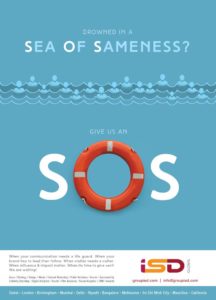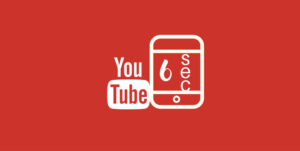Tag: Marketers
The Big Trap for Brands: A Sea of Sameness!
“. It’s no longer exceptional for stuff (anything, everything ) to work. Which means the bar for ” standing out ” has risen dramatically.

Does the world need another ad agency?
It’s amazing how a single tap on the space bar can make such a difference.
“Another” is one of those odd English words that have multiple and contradictory meanings. One definition is “being one more in addition to one or more of the same kind,” like having another car payment or eating another piece of pizza (two more things none of us likely need).
But “another” also means “different or distinct from the one first considered.” That puts an entirely different spin on things, and putting a space between the letters underscores the point.
The world rarely needs “another,” but it will always welcome “an other” — particularly in the most mature, crowded and commoditized industries, where sameness leads to staleness.
Time after time, another product or service gets superseded by an other product or service, making our lives more pleasant, more efficient, more productive, or better in a host of additional ways.
Seeking “an other” is a good strategy to keep pace with the inexorable march of creative destruction. In the marketplace, what is, will not always be, and what is to come, has not always been. The task of strategists is to be agents of creation rather than victims of destruction. Our challenge is to pursue the new and unproven even as we preserve the existing and profitable.
Unless you can ensure your company, brand or service is continually and legitimately “an other,” it’ll end up becoming just “another.”
We are tribal by nature. Human beings have evolved in that fashion. Therefore the ‘ herd mentality ‘. Yes, we have heard that before. And this as well. Birds of the same feather. Flocking together. Which leads to the SOS factor: Sea of Sameness. What makes you distinct? What makes you unique? There is comfort in fellowship. There is comfort in companionship. But, the real magic happens outside the comfort zone.
Are you up to the challenge/opportunity? We at ISD Global(https://bit.ly/2riIk7l) are and looking forward to it.
Ends
www.groupisd.com/story
www.brandknewmag.com
Is the 30-second ad dying?
The death of an advertising stalwart!
Well it surely appears so. And Silicon Valley is killing it.The rise of social media has made the elaborate plot lines of old-school spots seem archaic. And the Mad Men are, well, mad.Or, so was the fad!
Trapeze back to the days of the 30 second long format ads(long by today’s standards) where marketers, brand owners, agency heads, creative directors, art directors and film makers peddled a basketful of promise, creative thought and motivation to influence the seemingly reachable TG in their quest to change behaviours, cultures and consumption patterns. There was a certain trance in that romance to create.

So what is prompting the change? In an always on land of uncertainty, are we losing the plot(and losing the audience) or has the landscape itself changed?
6 is the new 30
They say 20 is the new 40 when it comes to audience maturity and demographics. Platforms like YouTube have increasingly challenged agencies to tell their stories in a 6-second slot — the average attention span of today’s mobile user. That mobile user, who again by conventional paradigm, is on a perennial instant fatigue. So 30 seconds is a long journey to risk with them! 6 has indeed become the new 30. And numbers don’t lie!
It makes sense. You might be willing to sit through a 3-minute trailer before a movie, or a 30-second “Whassup” ad before an episode of Jimmy Fallon.That may come across as non intrusive or no skin of your back. But amidst the native content of notoriously short-form channels like Instagram or Snapchat, these types of ads are disproportionately long. So much so, that they may pre qualify to be spam! Just kidding.
And for all those who are number crunchers: if we had a nickel for every 60-second YouTube video we gave up on because of an unskippable 30-second ad, we’d be at least $1.25 richer. What will you do for a few dollars more?
“Creativity is dead.” — Old School Advertisers
That almost seems like an Old Jungle saying(remember Phantom is rough with roughnecks!!!).
Ad execs counter that cutting time means sacrificing emotional stakes and story arc for the sake of speed, effectively prioritizing watchability over effectiveness.
Another, not-so-secret motive: it’s harder to get paid proportionally for the production of super-short ads, which still require actors and equipment.The CFO and CMO lines have been blurring and the motive should not surprise us.
Hey, we love Ogilvy as much as the next ad geek. But as the father of mass media, Marshall McLuhan, put it back in the ‘60s: “The medium is the message.” Yes, we now surely get the message.
And today’s medium is 6-second Snap Stories. And it has to be over in a snap. Otherwise today’s audience will snap out of it.So the mean median for a message is all coming down to 6 in the City(and beyond).
So, Lights, Camera….do we have the time to say Action?
ENDS
www.groupisd.com
www.brandknewmag.com
Image: Digitalvidya
Design Thinking for Brands: Making a case for Analogous Inspiration
So, the next time you are developing or enhancing a product,it would be worthwhile to look beyond the ‘ walled garden ‘ that defines/chains your industry for some analogous inspiration. For that idea or product of yours to become truly beyond compare.
Emotions that have no speed limit when it comes to virality !
If one were to go granular with the emotions’ basket, we would have the following and more in the bucket list:Happiness/Joy; Sadness/Depression; Rage/Anger; Pride/Prejudice; Disgust/Disillusionment; Wonder/Awe and so on and so forth.
Researchers at the Beihang University in China gauged various online emotions by tracking emoticons embedded in millions of messages posted on Sina Weibo, a popular Twitter-like microblogging platform. Their conclusion: Joy moves faster than sadness or disgust, but nothing is speedier than rage. The researchers found that users reacted most angrily—and quickly—to reports concerning “social problems and diplomatic issues”. It’s diabolical that a strong anti social emotion like rage gets the maximum social attention and currency!!!
In many cases, these ‘ social flare ups ‘ triggers a chain reaction of anger with multiple circles of the social community getting influenced and participating with equal or more venom.
In another study conducted by Jonah Berger and a colleague at Wharton based on 7000 articles covered by The New York Times, they discovered that if there was one emotion that overtook rage in billings, it was awe. The wonder and excitement of a new discovery of beauty or knowledge or a breakthrough in the fight against cancer; puts awe as an emotion in overdrive thus heaping bagfuls of viral.“Awe gets our hearts racing and our blood pumping,” Berger says. “This increases our desire for emotional connection and drives us to share.”
For all those who thought that sadness would emerge triumphant in the race to viral stardom, sorry to disappoint you. Sadness was considered to be a ‘ deactivating emotion ‘ where people pull down or withdraw leaving it with little torque to go the distance. If you feel a little melancholic about it, let that stay.
So, the next time you see or experience road rage, talk yourself into believing that it need not be infectious(or go viral).
ENDS
groupisd.com
brandknewmag.com
